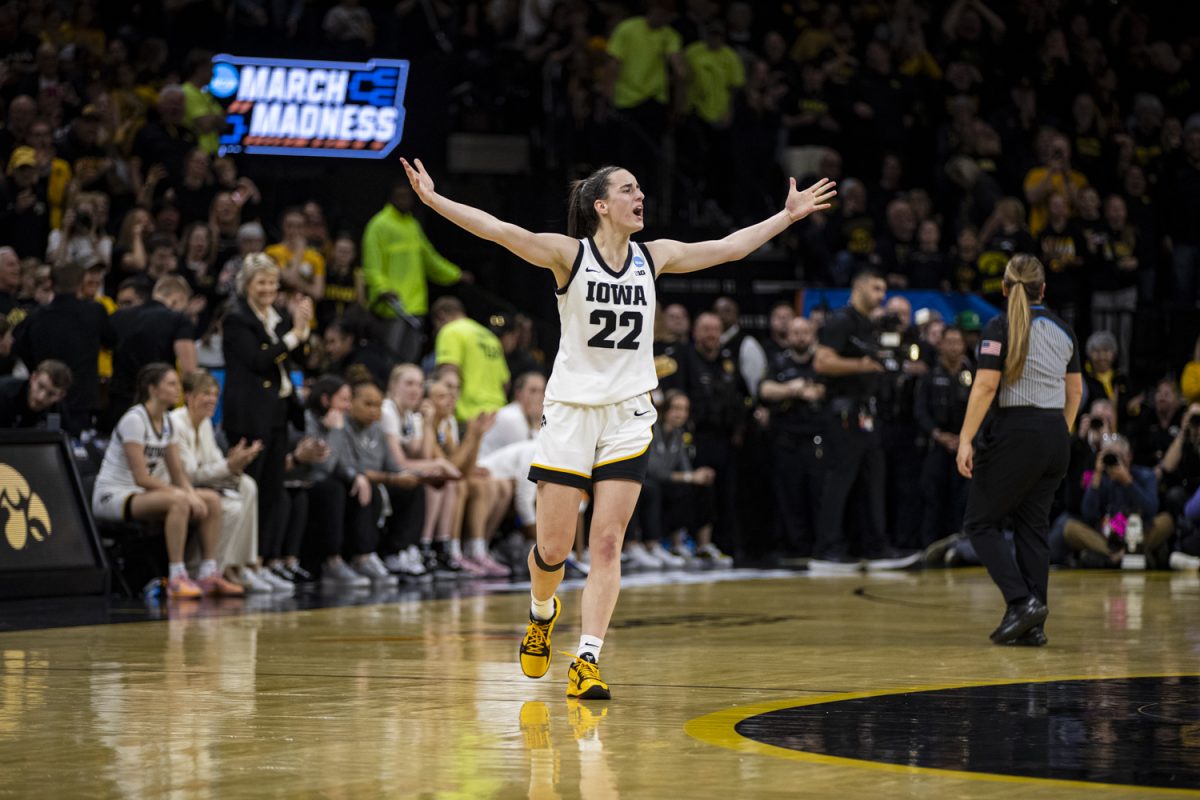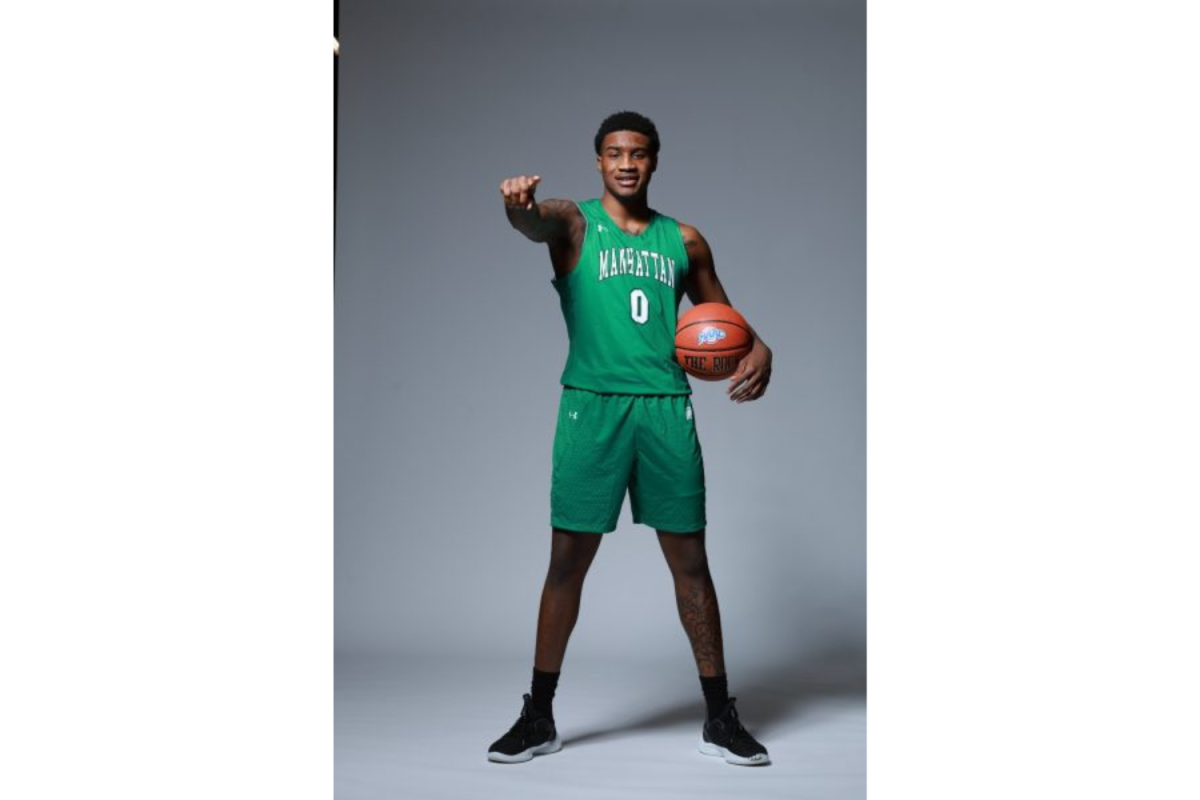Emma Stevenson runs and springs onto the bar. The GymHawk kicks her legs over her head and pulls herself up on the high bar into a handstand.
As Stevenson gains momentum, she stops in a handstand-type stance, moves her hands to the side and flips her body over to the other side of the bar.
She suddenly lets go, allowing her body to fly backwards. She puts her hands on her stomach as her body flips backwards numerous times in the air, preparing to land on the mat below her.
Stevenson lands on her feet. There’s no movement — she’s stuck her landing.
This event, the uneven bars, serves as a strong foundation for the Iowa women’s gymnastics team. The GymHawks showcase their upper body strength on this event, where they averages a score of 48.930 out of 50.
“That’s the event where, if they miss, they’re shocked — it’s shocking if something goes wrong over there,” said head coach Larissa Libby said. “I think it’s the place where they’re most comfortable, where they have the most consistency, where they have the most stability.”
Libby attributes the team’s success on the event to seniority, a rarity on a team dominated by underclassmen. All three of the team’s seniors — Stevenson, Maya Wickus and Kaitlynn Urano — compete on bars. Sophomores Sydney Hoerr and Emma Willis and freshman Alie Glover complete the event’s lineup.
“After this class goes, that’s our whole bar lineup gone,” Libby said. “Trying to teach the youngest ones to take that place is going to be difficult.”
Gymnasts must move from the low bar, which sits a little more than 5½ feet high, to the higher bar, which is around 8 feet high, during their routines. This action is called a bail.
The gymnasts must move between the bars twice in their routines. They must also show circling, which they use to gain momentum, have a release move, and finish the routine with a powerful dismount.
The bars require a different type of endurance than other events: It’s mostly arm strength. Consistent repetition of a routine is a way to train a gymnast’s arm strength, something that is learned and maintained throughout a gymnast’s career.
The team has gymnastic-specific exercises to work on their uneven-bar routines. Willis said the exercises work to strengthen all the arm muscles for their routine.
“It’s not necessarily like you have to have these really jacked arms to do it,” she said.
Fluency is a key component of a bars routine. Gymnasts can get points deducted if their swing is choppy or if they struggle on their transition from one bar to another.
“There are some people who are not natural swingers,” Libby said. “It’s hard to fight against that if you’re not a natural swinger — that’s probably the hardest part of bars: making it look smooth.”
Willis brings a “killer mentality” to her routine.
“You really only have 30 seconds to get [the routine] done,” she said. “You have to go in with that killer instinct, with the knowledge that you already know you’re going to do it.”
The gymnasts’ dismounts conclude their routines and are the most important aspect of the event. All but two of the GymHawks perform “E” level dismounts — the most difficult kinds of dismounts. It’s the last impression the judge has of a gymnast’s routine.
“Larissa always says to put a stamp on it,” Willis said. “The letter is written, you’ve written the return address, but you need a stamp.”
Willis puts a stamp on her bar routines by sticking her landings.
“Throw your head back and salute,” she said. “Show the judges that my feet did not move, and please don’t deduct me for that. You finish it like you just did the best bar routine of your life.”






